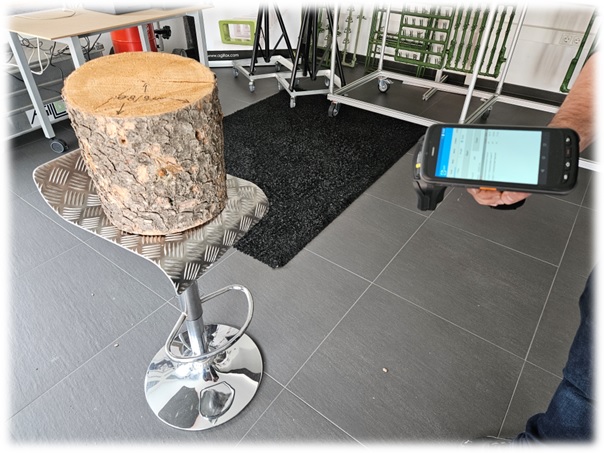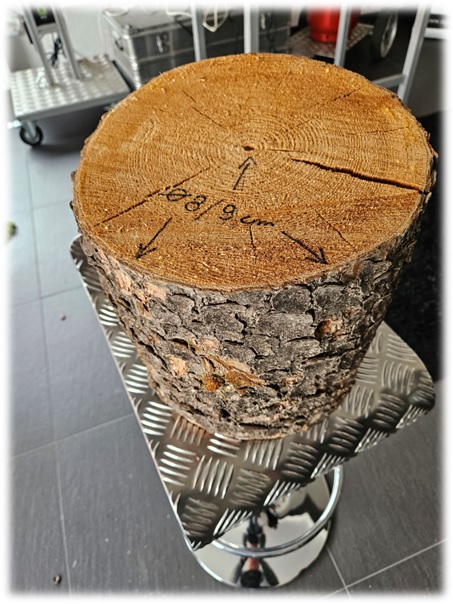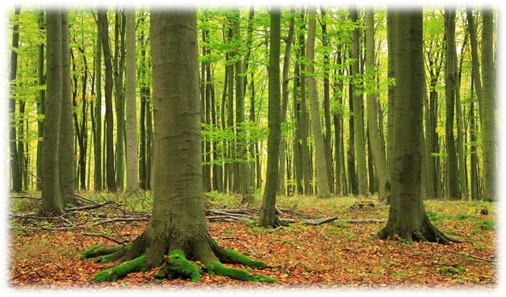
A single tree does not make a forest!
Monitoring environmental effects on trees in forestry.
RFID applications know no limits when it comes to using this technology.
Currently, there are many processes in place to record and measure environmental impacts. These findings are the basis to be able to take measures that are important for all of us. For this reason, a worldwide project was initiated to monitor trees and to register the environmental influences in trees.
Thus, a technical university from the south of Germany approached us to mark trees. However, they required a unique sustainable marking that would last for years. One of the standard disciplines of RFID.
Another requirement was that the marking should be easy to install without causing major damage to the tree. Furthermore, the unique identification should be easily retrievable and readable. An appropriate reading range of the marker (approx. 30 - 50cm) was desired as a further criterion.
Do not cut down the tree that gives you cool shade!
At first glance, not a difficult task, but there are parameters that had to be considered. The tag (transponder) must not exceed a certain size. It must be inserted into the tree so that it does not get lost. Trees grow and repel foreign objects. Preferably made of a natural material. Why not from wood, is obvious?!
Trees contain a lot of liquid under the bark (especially in summer) and also have growth of other plants (moss, lichen etc.) which also have moisture in them.
These were all issues that had to be considered when developing a solution. So the RadioForce team got to work.
The solution from RadioForce:
- A small set of specifications was created. The parameters were clear and the task seemed simple at first.
- A POC (proof of concept) was then carried out. This provided insights into the form factor, performance and materials used for the tags.
- Development of a wooden tag with appropriate performance characteristics and small size.
- Logs were obtained and the solution was then tested with them. The reading tests were so successful that TU immediately conducted a field test.


A clear registration is a basic requirement!
In total, the tree population in the field trial amounts to 15,000 trees. A quick and easy insertion of the tags and simultaneous registration was the basic requirement of the application. As a pleasant side effect, it was not only possible to read out the unique number and date of the respective tags, but also to record the GPS coordinates of the respective tree. So you know which tree is where!
Equipped with a cordless screwdriver (with wood drill), the tags and an RFID PDA, an employee was able to carry out the insertions in a very short time.
The first step was made. Now we had to wait and see.
2 years later: the day of truth. Now the employees of the TU proceeded to find the trees that had been registered 2 years earlier.
Only after unambiguous recognition of the respective tree, the extent of the environmental impact could be recorded. For this, the employees only needed the RFID PDA.
Locating the tags was a simple exercise. The inserted powerful wood tags paired with the PDA and its output power of up to 30dB completed the task to the complete satisfaction of the employees.
We hope that the TU's findings will help us all move forward and thus keep the research successful. RFID was able to make a small contribution to this application, but it had a big impact on the data obtained. Precise and unambiguous recognition of the trees is the basic requirement for a sustainable study that will be conducted for years.

Friendship is like a tree: what counts is not how tall it is, but how deep the roots are.
If you want to know more about our tailor-made solutions, simply contact us. We're a phone call or email away.
RadioForce: +49 8168 9978180 or Email: infos@radioforce.net